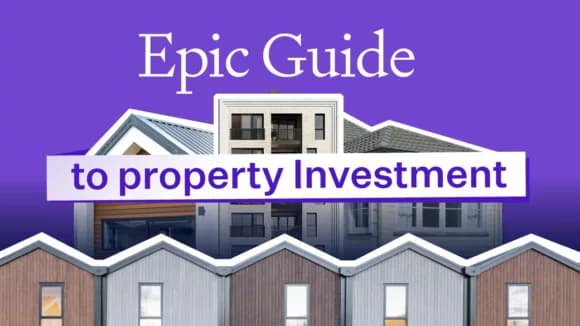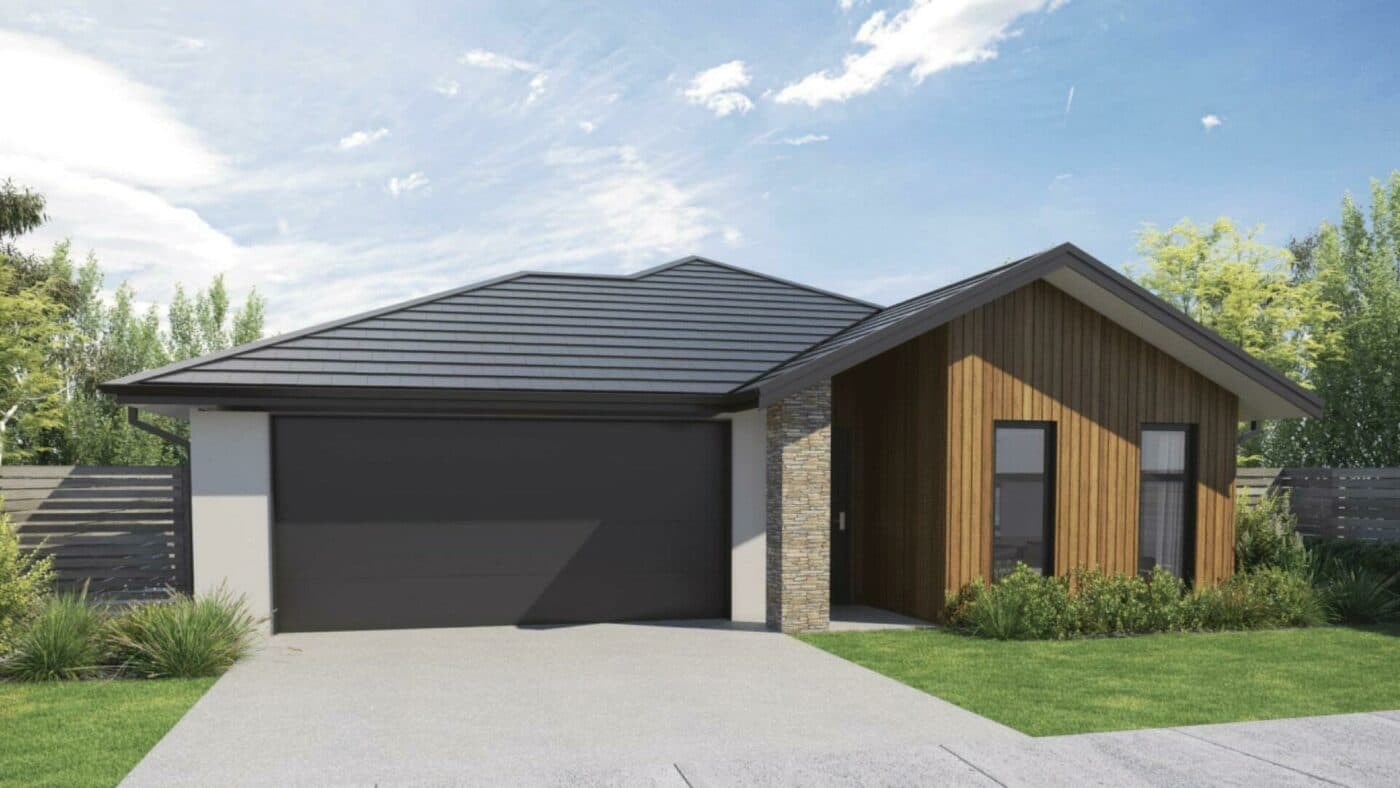
Property Investment
Property investment NZ – The epic guide to property investment
Explore the latest in NZ property investment with our comprehensive 2026 guide. Gain insights into strategies and detailed steps for success.
Property Investment
10 min read

Author: Laine Moger
Journalist and Property Educator, holds a Bachelor of Communication (Honours) from Massey University.
Reviewed by: Ed McKnight
Resident Economist, with a GradDipEcon and over five years at Opes Partners, is a trusted contributor to NZ Property Investor, Informed Investor, Stuff, Business Desk, and OneRoof.
Eventually, most property investors hit a wall.
They start with a hiss and a roar, buy properties, and start growing an investment portfolio.
But, eventually, the bank gets in the way … and they say ‘no’.
How do you get past the roadblock?
One strategy to keep growing your portfolio is the: “Sell 1, to buy 2”.
In this article, you’ll learn what the sell 1 to buy 2 strategy is, how it works, and whether it could be the right fit for your portfolio.
Summary:
In short, if you have an underperforming investment property you can potentially sell that property and buy 2 more with the equity within that property.
That’s because recent government and Reserve Bank changes have meant that some properties that used to be good … will no longer have a place within your portfolio.
That’s especially the case if you’ve been investing in existing properties that now have higher taxes and higher deposit requirements.
For example, if you already own an existing investment property you might find that:
That’s why under the Sell 1 to Buy 2, investors might sell an existing property to buy 2 New Builds, although this isn’t always the case.
If you’ve owned an existing property for a while, it has probably increased in value.
But, because of loan-to-value-ratio (LVR) restrictions, you might not be able to borrow more money against that property.
If deposit (equity) is the factor holding you back, this could stop you from growing your portfolio.
For instance, you bought an investment property for $1 million. You needed a 20% deposit at the time, so you took out an $800k mortgage.
The value has now increased to $1.25 million. Awesome.
But now the LVR restrictions have changed. You might have an extra $250k of equity within the property, but you can’t borrow against that equity to buy your next property.
Why? Because the LVR restriction is 60%.
However, if you sold that property, you might walk away with $400k worth of cash after paying the real estate agent.
The next question is, what do you want to do with it?
One option is to take that $400k and buy 2 New Build properties.
Remember, you only need a 20% deposit for New Builds because they are exempt from LVR restrictions. This is key.
You’ve got $400k in cash from selling your $1.25 million property. What could you do with it?
Let’s look at a $1 million New Build property on the North Shore (Auckland).
The deposit is 20%, which means it only requires $200k as a deposit.
(This is half the deposit you would need to purchase an existing $1m property, which would require a $400k deposit at 40% deposit).
You can buy two $1m properties with $400k as a deposit.
It’s not 2 for the price of 2, but 2 for the deposit of 1.
You’d do this because instead of having 1x $1.25 million property, you now have 2x $1 million properties.
That means you control assets of $2 million rather than $1.25 million.
Why does this matter?
If you own your single existing investment property worth $1.25 million, how much do you make if the value goes up by 5% in a year?
$62,500.
OK. What about if your 2x $1 million properties increase in value by 5% in a year?
You now make $100,000.
So, in this case you made an extra $37,500 that year because you used the sell 1 to buy 2 strategy.
This is only possible because of Reserve Bank regulations that make New Builds a more efficient use of your deposit.
This way you use more of the bank’s money to invest.

So you want to use the sell 1 to buy 2 strategy. What do you actually have to do?
The sell 1 to buy 2 can be life (and portfolio) changing. But, it’s not the right fit for all investors.
For instance, not all investors have the equity to do it. And not all investors are investing in existing properties. In that case, you might not be able to use the sell 1 to buy 2.
Similarly, not all investors are equity constrained. Sometimes investors can’t borrow more because of their income. In that situation this strategy might not work for you at all.
The best way to determine whether this is right for you is to work with a financial advisor specialising in property.
This is what we do here at Opes Partners, but there are other financial advisers you can also use.
It goes without saying that you want a reasonable price when you sell your investment properties. And the price you get is going to depend on what your property is.
But selling a house takes time and effort, so hiring an experienced real estate agent is a good idea.
Ideally, you want someone who knows your situation and can help you get the best dollar for your investment.
Then it’s time to figure out how to get the best price for your property.
Once you decide the time is right to sell, it’s time to prepare your property for the market.
Many investors list their properties for sale … but don’t get as much money as they could.
That’s because they miss some of these simple steps to prepare your property for sale:
It’s generally better to spruce up your property before taking the marketing photos rather than selling it as is.
This doesn’t necessarily mean pouring thousands of dollars in if it’s not needed. But there are small, specific things you can use to ensure your property is sale-ready.
Together, these small actions make a big difference.
Plus, they are cost-effective, with many requiring just a tin (or two) of elbow grease.
A small investment of time or money, if you’d prefer to pay a handyman, can equal a significant payoff.
After the must-dos, the next best place to spend time and money is on the floors and walls.
You might give your property an internal paint job or replace the carpet.
To do all of the pointers in #1, it’s best to sell your property with no-one in it – otherwise known as vacant possession.
While some investors might baulk at the prospect of not earning rent while the property is marketed and sold, it can cost them $10,000 to $30,000 in the sale price if the property is sold with a tenant. That's because:
To do this, you give your tenants notice (90 days if on a periodic tenancy) of your intention to sell the property and ask them to find a new property to rent.
This means you can conduct the renovations without disturbing or relying on them to keep the place clean.
By the time you come to sell your property your tenants will have moved out, which means there’ll be no furniture in the place.
You cannot sell an empty house for top dollar.
Great staging can add a return on investment four to five times its cost and help sell the property more quickly.
For a three-bedroom home, this may only cost around $2,000 (including GST) over a four-week sales period.
This means you can often sell the property for $8,000 to $10,000 more than if you didn’t stage the property.
You want your property to look like it could be in a magazine. Although prospective purchasers aren’t buying the furniture, they’ll first look at the pristine white linen on the bed or the modern, streamlined sofa in the lounge.
This all helps the buyers imagine themselves living there. Staging helps buyers fall in love with the space ... and then be willing to pay top dollar for it.
A wee word of warning, sometimes banks will take the money you’ve just made from selling your property – and force you to pay down existing debt.
This isn’t ideal because, generally speaking, when you sell a property you expect to keep the profit to spend on what you want – another investment property or a holiday.
But, when a credit assessment is triggered, the bank will look at all your lending under their current policies.
If their policies have changed, or you have had a change in income, they can force you to use the money from the house sale to pay down debt.
This means if you’ve changed jobs and your income has dropped – or if you’ve gone from a 2 to a 1-income household – this could impact you.
Split banking can be a way to protect your money because (as the name suggests) it involves splitting your lending across multiple banks.
A bit of number crunching is involved, so it’s a good idea to discuss this with your mortgage broker – before you sell your property.

The most significant mistake investors make with this strategy is not implementing it when they can.
Investors think: "My property is underperforming. I need to sell", but it never ends up happening.
This is why chatting with your mortgage broker or a financial adviser is a good idea.
Of course, on the flip side, it isn’t the right fit for every investor.
For instance, if you're a renovations-based investor this isn't the right game plan because you deal with mostly existing property – not New Builds.
But if you are a buy-and-hold investor, this can make a big difference.
Journalist and Property Educator, holds a Bachelor of Communication (Honours) from Massey University.
Laine Moger, a seasoned Journalist and Property Educator holds a Bachelor of Communications (Honours) from Massey University and a Diploma of Journalism from the London School of Journalism. She has been an integral part of the Opes team for four years, crafting content for our website, newsletter, and external columns, as well as contributing to Informed Investor and NZ Property Investor.
This article is for your general information. It’s not financial advice. See here for details about our Financial Advice Provider Disclosure. So Opes isn’t telling you what to do with your own money.
We’ve made every effort to make sure the information is accurate. But we occasionally get the odd fact wrong. Make sure you do your own research or talk to a financial adviser before making any investment decisions.
You might like to use us or another financial adviser